COSPAR ID 2011-070A | SATCAT no. 37936 | |
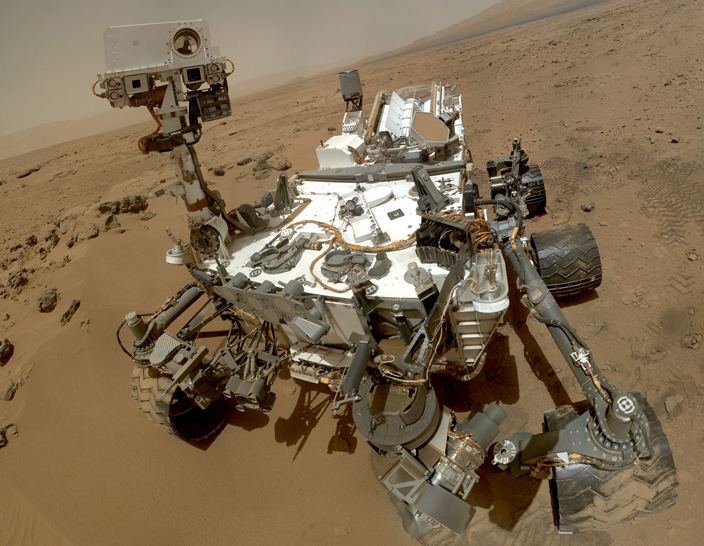 | ||
Mission duration Primary: 669 Martian sols (687 days)Elapsed: 1636 sols (1680 days) | ||
Mars science laboratory curiosity rover mission animation
Mars Science Laboratory (MSL) is a robotic space probe mission to Mars launched by NASA on November 26, 2011, which successfully landed Curiosity, a Mars rover, in Gale Crater on August 6, 2012. The overall objectives include investigating Mars' habitability, studying its climate and geology, and collecting data for a manned mission to Mars. The rover carries a variety of scientific instruments designed by an international team.
Contents
- Mars science laboratory curiosity rover mission animation
- Mars science laboratory curiosity rover animation
- Overview
- Goals and objectives
- Spacecraft
- Rover
- Instruments
- History
- Landing site selection
- Launch vehicle
- Launch event
- Cruise stage
- Mars transfer orbit
- EDL spacecraft system
- EDL eventAugust 6 2012
- Guided entry
- Parachute descent
- Powered descent
- Sky crane
- Landing site
- References
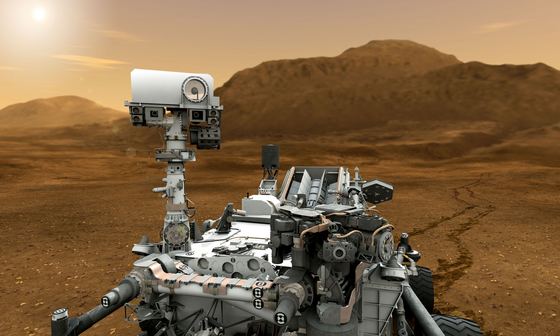
Mars science laboratory curiosity rover animation
Overview
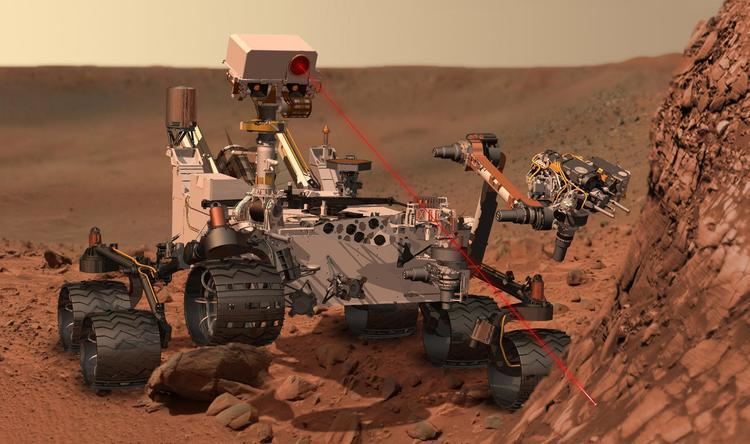
MSL successfully carried out the most accurate Martian landing of any known spacecraft, hitting a small target landing ellipse of only 7 by 20 km (4.3 by 12.4 mi), in the Aeolis Palus region of Gale Crater. In the event, MSL achieved a landing 2.4 km (1.5 mi) east and 400 m (1,300 ft) north of the center of the target. This location is near the mountain Aeolis Mons (a.k.a. "Mount Sharp"). The rover mission is set to explore for at least 687 Earth days (1 Martian year) over a range of 5 by 20 km (3.1 by 12.4 mi).
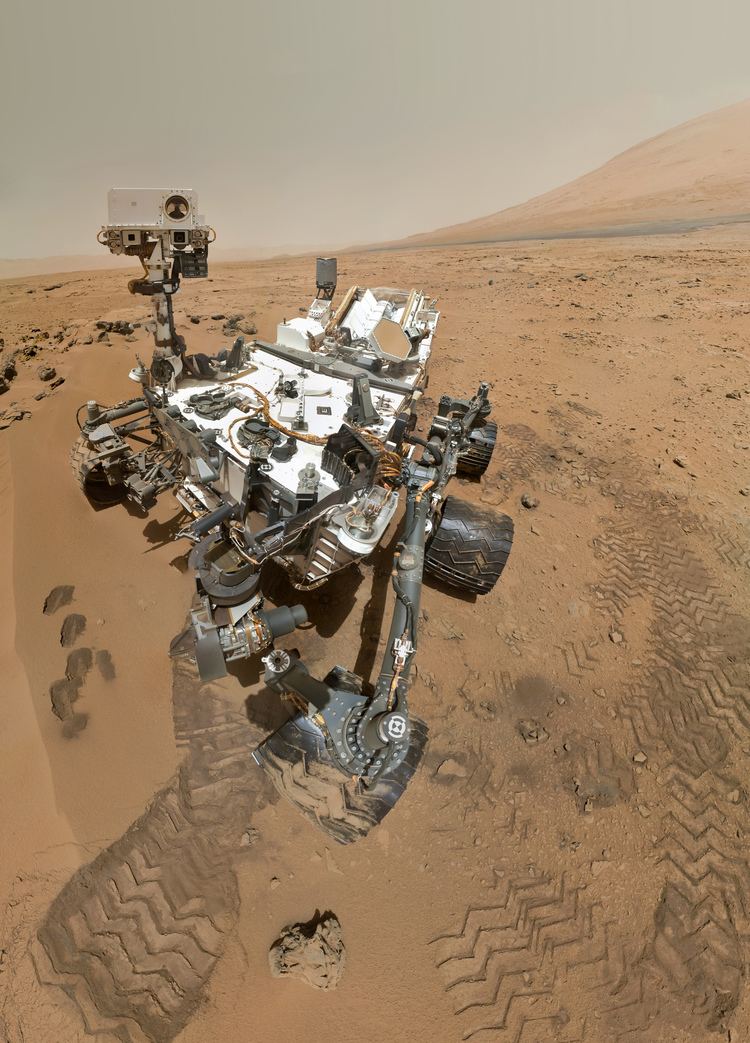
The Mars Science Laboratory mission is part of NASA's Mars Exploration Program, a long-term effort for the robotic exploration of Mars that is managed by the Jet Propulsion Laboratory of California Institute of Technology. The total cost of the MSL project is about US$2.5 billion.
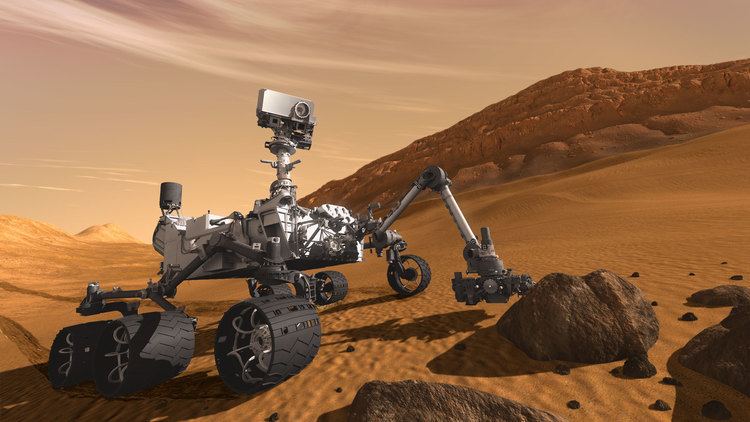
Previous successful U.S. Mars rovers include Sojourner from the Mars Pathfinder mission and the Mars Exploration Rovers Spirit and Opportunity. Curiosity is about twice as long and five times as heavy as Spirit and Opportunity, and carries over ten times the mass of scientific instruments.
Goals and objectives
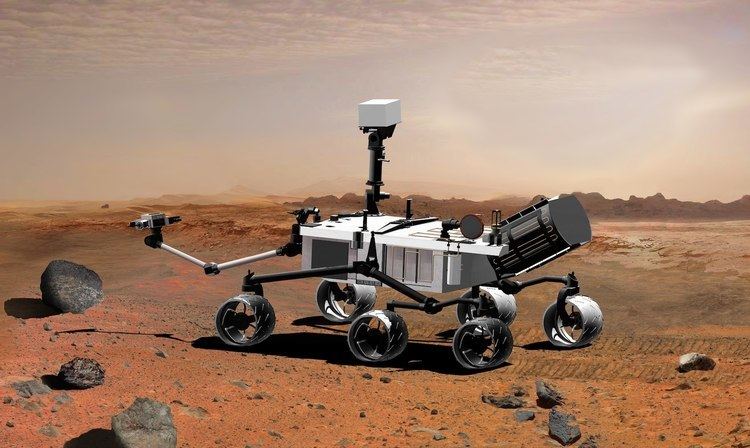
The MSL mission has four scientific goals: Determine the landing site's habitability including the role of water, the study of the climate and the geology of Mars. It is also useful preparation for a future manned mission to Mars.
To contribute to these goals, MSL has eight main scientific objectives:
About one year into the surface mission, and having assessed that ancient Mars could have been hospitable to microbial life, the MSL mission objectives evolved to developing predictive models for the preservation process of organic compounds and biomolecules; a branch of paleontology called taphonomy.
Spacecraft
The spacecraft flight system had a mass at launch of 3,893 kg (8,583 lb), consisting of an Earth-Mars fueled cruise stage (539 kg (1,188 lb)), the entry-descent-landing (EDL) system (2,401 kg (5,293 lb) including 390 kg (860 lb) of landing propellant), and a 899 kg (1,982 lb) mobile rover with an integrated instrument package.
The MSL spacecraft includes spaceflight-specific instruments, in addition to utilizing one of the rover instruments—Radiation assessment detector (RAD)—during the spaceflight transit to Mars.
Rover
Curiosity rover has a mass of 899 kg (1,982 lb), can travel up to 90 m (300 ft) per hour on its six-wheeled rocker-bogie system, is powered by a radioisotope thermoelectric generator (RTG), and communicates in both X band and UHF bands.
The rover's computers function on VxWorks, a real-time operating system from Wind River Systems. During the trip to Mars, VxWorks ran applications dedicated to the navigation and guidance phase of the mission, and also had a pre-programmed software sequence for handling the complexity of the entry-descent-landing. Once landed, the applications were replaced with software for driving on the surface and performing scientific activities.
Instruments
The general analysis strategy begins with high resolution cameras to look for features of interest. If a particular surface is of interest, Curiosity can vaporize a small portion of it with an infrared laser and examine the resulting spectra signature to query the rock's elemental composition. If that signature intrigues, the rover will use its long arm to swing over a microscope and an X-ray spectrometer to take a closer look. If the specimen warrants further analysis, Curiosity can drill into the boulder and deliver a powdered sample to either the SAM or the CheMin analytical laboratories inside the rover.
History
NASA called for proposals for the rover's scientific instruments in April 2004, and eight proposals were selected on December 14 of that year. Testing and design of components also began in late 2004, including Aerojet's designing of a monopropellant engine with the ability to throttle from 15–100 percent thrust with a fixed propellant inlet pressure.
By November 2008 most hardware and software development was complete, and testing continued. At this point, cost overruns were approximately $400 million. In the attempts to meet the launch date, several instruments and a cache for samples were removed and other instruments and cameras were simplified to simplify testing and integration of the rover. The next month, NASA delayed the launch to late 2011 because of inadequate testing time. Eventually the costs for developing the rover reached $2.47 billion, that for a rover that initially had been classified as a medium-cost mission with a maximum budget of $650 million, yet NASA still had to ask for an additional $82 million to meet the planned November launch.
Between March 23–29, 2009, the general public ranked nine finalist rover names (Adventure, Amelia, Journey, Perception, Pursuit, Sunrise, Vision, Wonder, and Curiosity) through a public poll on the NASA website. On May 27, 2009, the winning name was announced to be Curiosity. The name had been submitted in an essay contest by Clara Ma, a then sixth-grader from Kansas.
MSL launched on an Atlas V rocket from Cape Canaveral on November 26, 2011. On January 11, 2012, the spacecraft successfully refined its trajectory with a three-hour series of thruster-engine firings, advancing the rover's landing time by about 14 hours. When MSL was launched, the program's director was Doug McCuistion of NASA's Planetary Science Division.
Curiosity successfully landed in the Gale Crater at 05:17:57.3 UTC on August 6, 2012, and transmitted Hazcam images confirming orientation. Due to the Mars-Earth distance at the time of landing and the limited speed of radio signals, the landing was not registered on Earth for another 14 minutes. The Mars Reconnaissance Orbiter sent a photograph of Curiosity descending under its parachute, taken by its HiRISE camera, during the landing procedure.
Six senior members of the Curiosity team presented a news conference a few hours after landing, they were: John Grunsfeld, NASA associate administrator; Charles Elachi, director, JPL; Peter Theisinger, MSL project manager; Richard Cook, MSL deputy project manager; Adam Steltzner, MSL entry, descent and landing (EDL) lead; and John Grotzinger, MSL project scientist.
Landing site selection
Over 60 landing sites were evaluated, and by July 2011 Gale crater was chosen. A primary goal when selecting the landing site was to identify a particular geologic environment, or set of environments, that would support microbial life. Planners looked for a site that could contribute to a wide variety of possible science objectives. They preferred a landing site with both morphologic and mineralogical evidence for past water. Furthermore, a site with spectra indicating multiple hydrated minerals was preferred; clay minerals and sulfate salts would constitute a rich site. Hematite, other iron oxides, sulfate minerals, silicate minerals, silica, and possibly chloride minerals were suggested as possible substrates for fossil preservation. Indeed, all are known to facilitate the preservation of fossil morphologies and molecules on Earth. Difficult terrain was favored for finding evidence of livable conditions, but the rover must be able to safely reach the site and drive within it.
Engineering constraints called for a landing site less than 45° from the Martian equator, and less than 1 km above the reference datum. At the first MSL Landing Site workshop, 33 potential landing sites were identified. By the end of the second workshop in late 2007, the list was reduced to six; in November 2008, project leaders at a third workshop reduced the list to these four landing sites:
A fourth landing site workshop was held in late September 2010, and the fifth and final workshop May 16–18, 2011. On July 22, 2011, it was announced that Gale Crater had been selected as the landing site of the Mars Science Laboratory mission.
Launch vehicle
The Atlas V launch vehicle is capable of launching up to 7,980 kg (17,590 lb) to geostationary transfer orbit. The Atlas V was also used to launch the Mars Reconnaissance Orbiter and the New Horizons probe.
The first and second stages, along with the solid rocket motors, were stacked on October 9, 2011 near the launch pad. The fairing containing MSL was transported to the launch pad on November 3, 2011.
Launch event
MSL was launched from Cape Canaveral Air Force Station Space Launch Complex 41 on November 26, 2011, at 10:02 EST (15:02 UTC) via the Atlas V 541 provided by United Launch Alliance. This two stage rocket includes a 3.8 m (12 ft) Common Core Booster (CCB) powered by a single RD-180 engine, four solid rocket boosters (SRB), and one Centaur second stage with a 5 m (16 ft) diameter payload fairing. The NASA Launch Services Program coordinated the launch via the NASA Launch Services (NLS) I Contract.
Cruise stage
The cruise stage carried the MSL spacecraft through the void of space and delivered it to Mars. The interplanetary trip covered the distance of 352 million miles in 253 days. The cruise stage has its own miniature propulsion system, consisting of eight thrusters using hydrazine fuel in two titanium tanks. It also has its own electric power system, consisting of a solar array and battery for providing continuous power. Upon reaching Mars, the spacecraft stopped spinning and a cable cutter separated the cruise stage from the aeroshell. Then the cruise stage was diverted into a separate trajectory into the atmosphere. In December 2012, the debris field from the cruise stage was located by the Mars Reconnaissance Orbiter. Since the initial size, velocity, density and impact angle of the hardware are known, it will provide information on impact processes on the Mars surface and atmospheric properties.
Mars transfer orbit
The MSL spacecraft departed Earth orbit and was inserted into a heliocentric Mars transfer orbit on November 26, 2011, shortly after launch, by the Centaur upper stage of the Atlas V launch vehicle. Prior to Centaur separation, the spacecraft was spin-stabilized at 2 rpm for attitude control during the 36,210 km/h (22,500 mph) cruise to Mars.
During cruise, eight thrusters arranged in two clusters were used as actuators to control spin rate and perform axial or lateral trajectory correction maneuvers. By spinning about its central axis, it maintained a stable attitude. Along the way, the cruise stage performed four trajectory correction maneuvers to adjust the spacecraft's path toward its landing site. Information was sent to mission controllers via two X-band antennas. A key task of the cruise stage was to control the temperature of all spacecraft systems and dissipate the heat generated by power sources, such as solar cells and motors, into space. In some systems, insulating blankets kept sensitive science instruments warmer than the near-absolute zero temperature of space. Thermostats monitored temperatures and switched heating and cooling systems on or off as needed.
EDL spacecraft system
Landing a large mass on Mars is particularly challenging as the atmosphere is too thin for parachutes and aerobraking alone to be effective, while remaining thick enough to create stability and impingement problems when decelerating with retrorockets. Although some previous missions have used airbags to cushion the shock of landing, Curiosity rover is too heavy for this to be an option. Instead, Curiosity was set down on the Martian surface using a new high-accuracy entry, descent, and landing (EDL) system that was part of the MSL spacecraft descent stage. The novel EDL system placed Curiosity within a 20 by 7 km (12.4 by 4.3 mi) landing ellipse, in contrast to the 150 by 20 km (93 by 12 mi) landing ellipse of the landing systems used by the Mars Exploration Rovers.
The entry-descent-landing (EDL) system differs from those used for other missions in that it does not require an interactive, ground-generated mission plan. During the entire landing phase, the vehicle acts autonomously, based on pre-loaded software and parameters. The EDL system was based on a Viking-derived aeroshell structure and propulsion system for a precision guided entry and soft landing, in contrasts with the airbag landings that were used by the mid-1990s by the Mars Pathfinder and Mars Exploration Rover missions. The spacecraft employed several systems in a precise order, with the entry, descent and landing sequence broken down into four parts—described below as the spaceflight events unfolded on August 6, 2012.
EDL event–August 6, 2012
Despite its late hour, particularly on the east coast of the United States, the landing generated significant public interest. 3.2 million watched the landing live with most watching online instead of on television via NASA TV or cable news networks covering the event live. The final landing place for the rover was less than 2.4 km (1.5 mi) from its target after a 563,270,400 km (350,000,000 mi) journey. In addition to streaming and traditional video viewing, JPL made Eyes on the Solar System, a three-dimensional real time simulation of entry, descent and landing based on real data. Curiosity's touchdown time as represented in the software, based on JPL predictions, was less than 1 second different than reality.
The EDL phase of the MSL spaceflight mission to Mars took only seven minutes and unfolded automatically, as programmed by JPL engineers in advance, in a precise order, with the entry, descent and landing sequence occurring in four distinct event phases:
Guided entry
Precision guided entry made use of onboard computing ability to steer itself toward the pre-determined landing site, improving landing accuracy from a range of hundreds of kilometers to 20 kilometers (12 mi). This capability helped remove some of the uncertainties of landing hazards that might be present in larger landing ellipses. Steering was achieved by the combined use of thrusters and ejectable balance masses. The ejectable balance masses shift the capsule center of mass enabling generation of a lift vector during the atmospheric phase. A navigation computer integrated the measurements to estimate the position and attitude of the capsule that generated automated torque commands. This was the first planetary mission to use precision landing techniques.
The rover was folded up within an aeroshell that protected it during the travel through space and during the atmospheric entry at Mars. Ten minutes before atmospheric entry the aeroshell separated from the cruise stage that provided power, communications and propulsion during the long flight to Mars. One minute after separation from the cruise stage thrusters on the aeroshell fired to cancel out the spacecraft's 2-rpm rotation and achieved an orientation with the heat shield facing Mars in preparation for Atmospheric entry. The heat shield is made of phenolic impregnated carbon ablator (PICA). The 4.5 m (15 ft) diameter heat shield, which is the largest heat shield ever flown in space, reduced the velocity of the spacecraft by ablation against the Martian atmosphere, from the atmospheric interface velocity of approximately 5.8 km/s (3.6 mi/s) down to approximately 470 m/s (1,500 ft/s), where parachute deployment was possible about four minutes later. One minute and 15 seconds after entry the heat shield experienced peak temperatures of up to 2,090 °C (3,790 °F) as atmospheric pressure converted kinetic energy into heat. Ten seconds after peak heating, that deceleration peaked out at 15 g.
Much of the reduction of the landing precision error was accomplished by an entry guidance algorithm, derived from the algorithm used for guidance of the Apollo Command Modules returning to Earth in the Apollo program. This guidance uses the lifting force experienced by the aeroshell to "fly out" any detected error in range and thereby arrive at the targeted landing site. In order for the aeroshell to have lift, its center of mass is offset from the axial centerline that results in an off-center trim angle in atmospheric flight. This is accomplished by a series of ejectable ballast masses consisting of two 75 kg (165 lb) tungsten weights that were jettisoned minutes before atmospheric entry. The lift vector was controlled by four sets of two reaction control system (RCS) thrusters that produced approximately 500 N (110 lbf) of thrust per pair. This ability to change the pointing of the direction of lift allowed the spacecraft to react to the ambient environment, and steer toward the landing zone. Prior to parachute deployment the entry vehicle ejected more ballast mass consisting of six 25 kg (55 lb) tungsten weights such that the center of gravity offset was removed.
Parachute descent
When the entry phase was complete and the capsule slowed to Mach 1.7 or 578 m/s (1,900 ft/s) and at about 10 km (6.2 mi), the supersonic parachute deployed, as was done by previous landers such as Viking, Mars Pathfinder and the Mars Exploration Rovers. The parachute has 80 suspension lines, is over 50 m (160 ft) long, and is about 16 m (52 ft) in diameter. Capable of being deployed at Mach 2.2, the parachute can generate up to 289 kN (65,000 lbf) of drag force in the Martian atmosphere. After the parachute was deployed, the heat shield separated and fell away. A camera beneath the rover acquired about 5 frames per second (with resolution of 1600×1200 pixels) below 3.7 km (2.3 mi) during a period of about 2 minutes until the rover sensors confirmed successful landing. The Mars Reconnaissance Orbiter team were able to acquire an image of the MSL descending under the parachute.
Powered descent
Following the parachute braking, at about 1.8 km (1.1 mi) altitude, still travelling at about 100 m/s (220 mph), the rover and descent stage dropped out of the aeroshell. The descent stage is a platform above the rover with eight variable thrust monopropellant hydrazine rocket thrusters on arms extending around this platform to slow the descent. Each rocket thruster, called a Mars Lander Engine (MLE), produces 400 to 3,100 N (90 to 697 lbf) of thrust and were derived from those used on the Viking landers. A radar altimeter measured altitude and velocity, feeding data to the rover's flight computer. Meanwhile, the rover transformed from its stowed flight configuration to a landing configuration while being lowered beneath the descent stage by the "sky crane" system.
Sky crane
For several reasons, a different landing system was chosen for MSL compared to previous Mars landers and rovers. Curiosity was considered too heavy to use the airbag landing system as used on the Mars Pathfinder and Mars Exploration Rovers. A legged lander approach would have caused several design problems. It would have needed to have engines high enough above the ground when landing not to form a dust cloud that could damage the rover's instruments. This would have required long landing legs that would need to have significant width to keep the center of gravity low. A legged lander would have also required ramps so the rover could drive down to the surface, which would have incurred extra risk to the mission on the chance rocks or tilt would prevent Curiosity from being able to drive off the lander successfully. Faced with these challenges, the MSL engineers came up with a novel alternative solution: the sky crane. The sky crane system lowered the rover with a 7.6 m (25 ft) tether to a soft landing—wheels down—on the surface of Mars. This system consists of a bridle lowering the rover on three nylon tethers and an electrical cable carrying information and power between the descent stage and rover. As the support and data cables unreeled, the rover's six motorized wheels snapped into position. At roughly 7.5 m (25 ft) below the descent stage the sky crane system slowed to a halt and the rover touched down. After the rover touched down, it waited two seconds to confirm that it was on solid ground by detecting the weight on the wheels and fired several pyros (small explosive devices) activating cable cutters on the bridle and umbilical cords to free itself from the descent stage. The descent stage flew away to a crash landing 650 m (2,100 ft) away. The sky crane concept had never been used in missions before.
Landing site
Gale Crater is the MSL landing site. Within Gale Crater is a mountain, named Aeolis Mons ("Mount Sharp"), of layered rocks, rising about 5.5 km (18,000 ft) above the crater floor, that Curiosity will investigate. The landing site is a smooth region in "Yellowknife" Quad 51 of Aeolis Palus inside the crater in front of the mountain. The target landing site location was an elliptical area 20 by 7 km (12.4 by 4.3 mi). Gale Crater's diameter is 154 km (96 mi).
The landing location for the rover was less than 2.4 km (1.5 mi) from the center of the planned landing ellipse, after a 563,000,000 km (350,000,000 mi) journey. NASA named the rover landing site Bradbury Landing on sol 16, August 22, 2012. According to NASA, an estimated 20,000 to 40,000 heat-resistant bacterial spores were on Curiosity at launch, and as much as 1,000 times that number may not have been counted.
